Nudging the border with Belgium at the northern corner of France, Lille lies in French Flanders, having been territories of both England and Spain during its long history.
When its traditional industries, including mining, came to an end in the post-war period, Lille was considered a little drab. However, the city was given a new lease of life with the construction of the high-speed TGV train line, and then Eurostar terminus connecting it with Paris, London, and Brussels.
Reinventing itself as northern France’s creative hub, the fourth-largest city in the country is now brimming with cultural attractions, and has been awarded with both the title of European Capital of Culture and World Design Capital – an achievement not even Paris can match.
Here are the 15 best things to do in Lille.
1. Grand Place
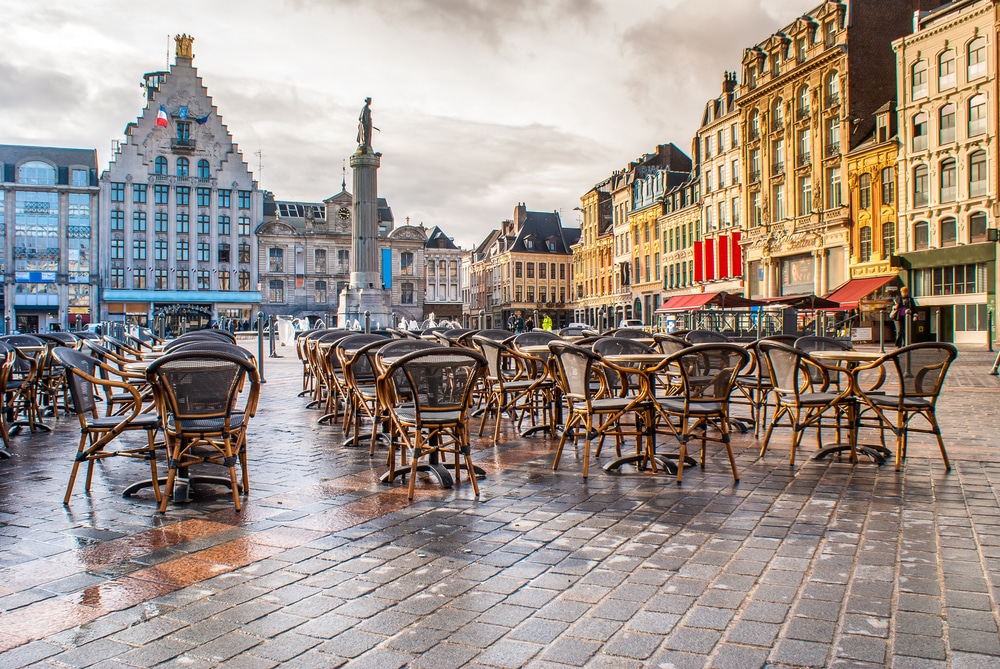 Source: Dziorek Rafal / shutterstock
Source: Dziorek Rafal / shutterstockOtherwise known as Place Charles de Gaulle, Lille’s Grand Place stands at the centre of city life. It is surrounded by beautiful examples of northern European architecture, dating from the seventeenth right up to the twentieth centuries, including the Old Stock Exchange, or Vieille Bourse.
Dating from the 1650s, just like the city itself the building has survived a number of tragedies, including a siege by Austrian forces of 1792. This is remembered in the Column of the Goddess at the square’s centre, watching over its pedestrians and market stalls.
2. Old Lille
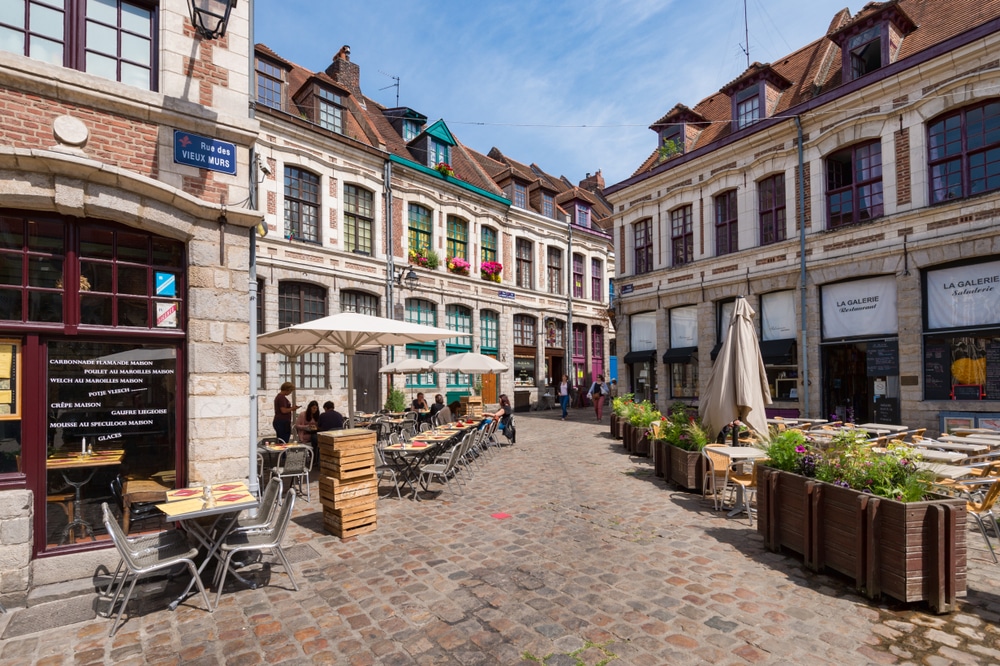 Source: Marc Bruxelle / shutterstock
Source: Marc Bruxelle / shutterstockArguably the most atmospheric part of the city, Vieux Lille (or Old Lille) has been cleaned up and restored but hasn’t lost any of its charm as a result.
Dotted with oddly-shaped public spaces lined with the tables and chairs of cafes and bars, its cobblestone streets have an impressive array of centuries-old buildings with a distinctly Flemish air.
Some of the best can be found in and around Place Louise de Bettignies, although no street is short of scenes worth a photograph.
3. Basilique Notre-Dame de la Treille
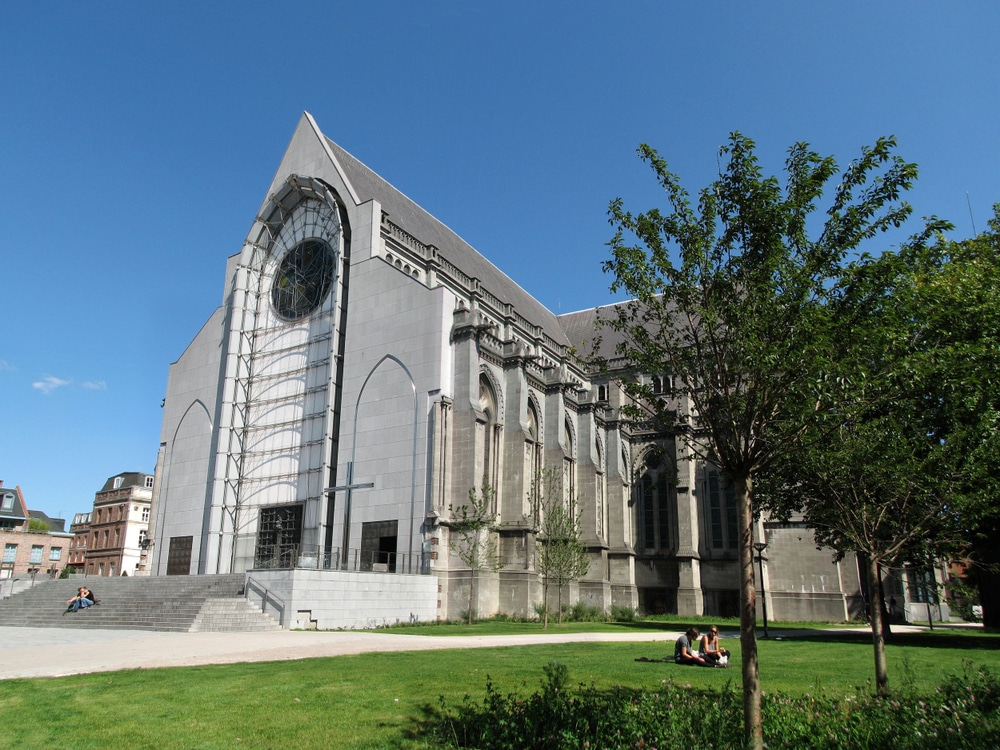 Source: MisterStock / shutterstock
Source: MisterStock / shutterstockThis national monument is not as old as it might at first appear, being constructed in the Gothic revival style from 1854, but only completed in 1999.
It replaced a church dedicated to Saint Peter that was destroyed during the French Revolution, and should have followed a design by British architects, though the job was eventually handed to Charles Leroy, a native of the city.
Partly wrapped in sparkling white marble, its works of art include the rose window set into the main façade by Ladislas Kijno, and a metalwork doorway created by a Jewish sculptor by the name of Georges Jeanclos.
Website: https://cathedralelille.fr
4. Palais des Beaux-Arts
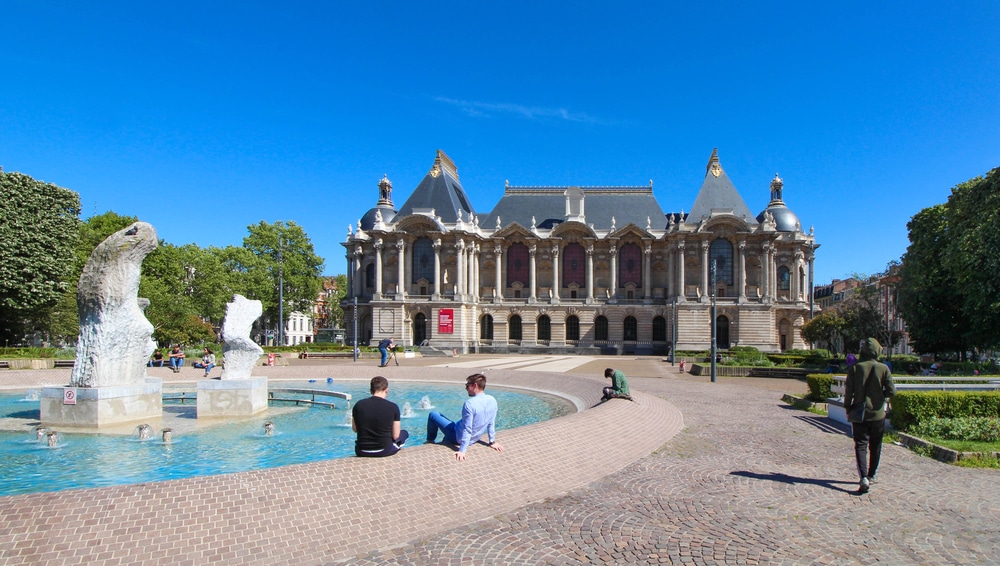 Source: MisterStock / shutterstock
Source: MisterStock / shutterstockStyled in cream-coloured stone and with a distinctly Belle Époque feel, the Palais des Beaux-Arts, or Palace of Fine Arts, is one of Lille’s most important museums.
It was also one of the first museums to be built in France, on the orders of Napoleon Bonaparte, in 1801. It began its collection with works seized from churches and conquered territories during the revolutionary and Napoleonic eras.
Now totalling more than 72,000 objects in 22,000 square metres of exhibition space, its collection is a who’s who of the art world.
Raphael, Donatello, Rembrandt, El Greco, Delacroix, and Rubens are just some of the names that hang from its illustrious walls.
Website: https://pba.lille.fr
5. Braderie
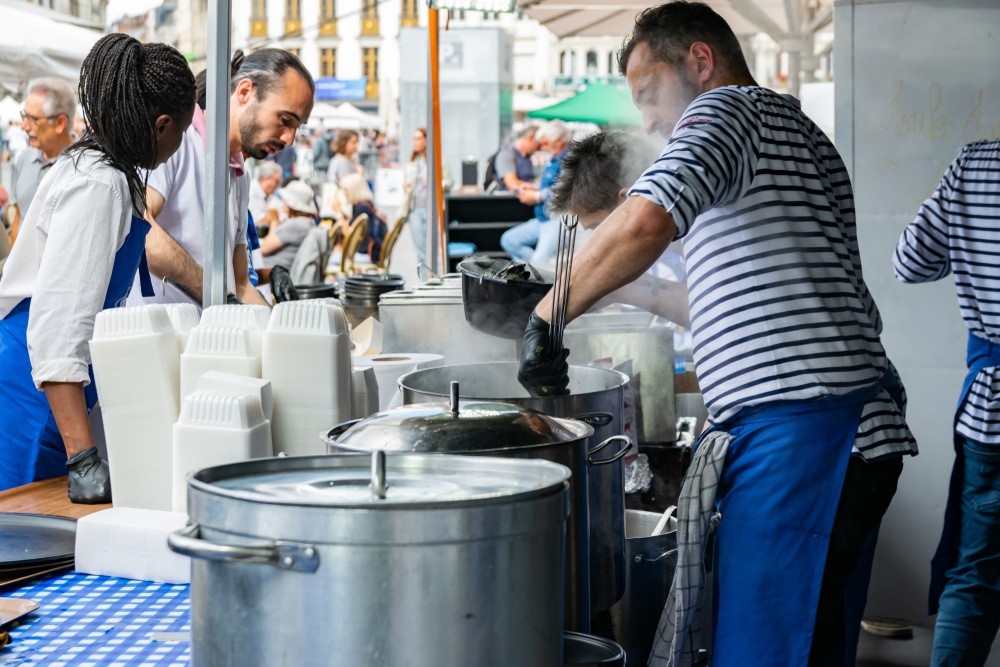 Source: mimpki / shutterstock
Source: mimpki / shutterstockVisit Lille on the first weekend of September and your time in the city will coincide with the Lille Braderie, a huge flea market whose origins date back to the twelfth century.
Welcoming somewhere between two and three million visitors each year, the Braderie’s stalls are said to stretch on for an incredible 100 kilometres around the streets of the city.
In addition, the city takes on a festive air, opening a whole series of events with a half-marathon, and continuing the celebrations with a fun fair, concerts, and all-night parties.
Website: https://www.braderie-de-lille.fr
6. Citadelle de Lille
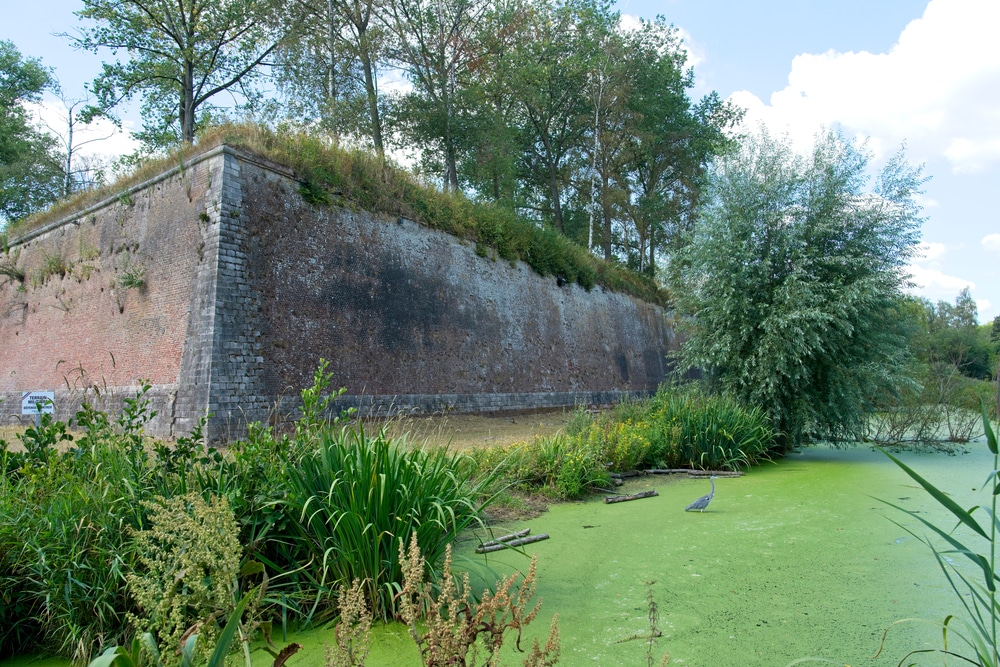 Source: Bennekom / shutterstock
Source: Bennekom / shutterstockBuilt in the 1670s, Lille’s citadel is a low, intricately-shaped pentagonal fortress incorporated into the city’s old walls.
The citadel was designed by Vauban, King Louis XIV’s chief military engineer, and was one of several forts constructed to protect France’s new northern borders.
Located just north of the city centre, today the citadel is surrounded by Lille’s Zoo, whose sheep keep the grass of the high defensive walls short for the rapid reaction force that is still based there.
To enter, visitors cross the old moat and slip under the Royal Gate, which leads to the Place d’Armes.
7. Charles de Gaulle Museum
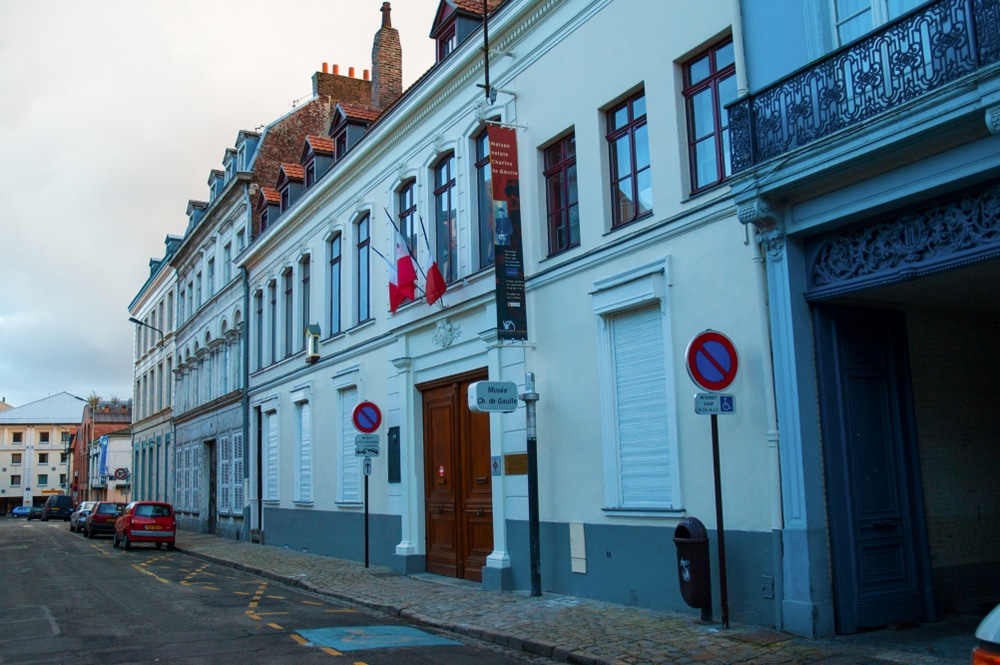 Source: Meiqianbao / shutterstock
Source: Meiqianbao / shutterstockIf the name of France’s wartime leader, Charles de Gaulle, appears often in Lille, it is because the late President of the Republic was born in the city on November 22nd 1890.
The building in which he was born, his maternal grandparents’ home in Rue Princesse, was converted into a museum in the late 1960s.
Recreating an authentic turn of the century middle-class home, the museum provides an insight into the sort of everyday life de Gaulle was born into.
Personal effects, including the great man’s christening robe, highlight his normal upbringing, while a multimedia centre unlocks the history of his career from the Second World War onward.
Website: https://maisondegaulle.fr
8. Jardin des Plantes
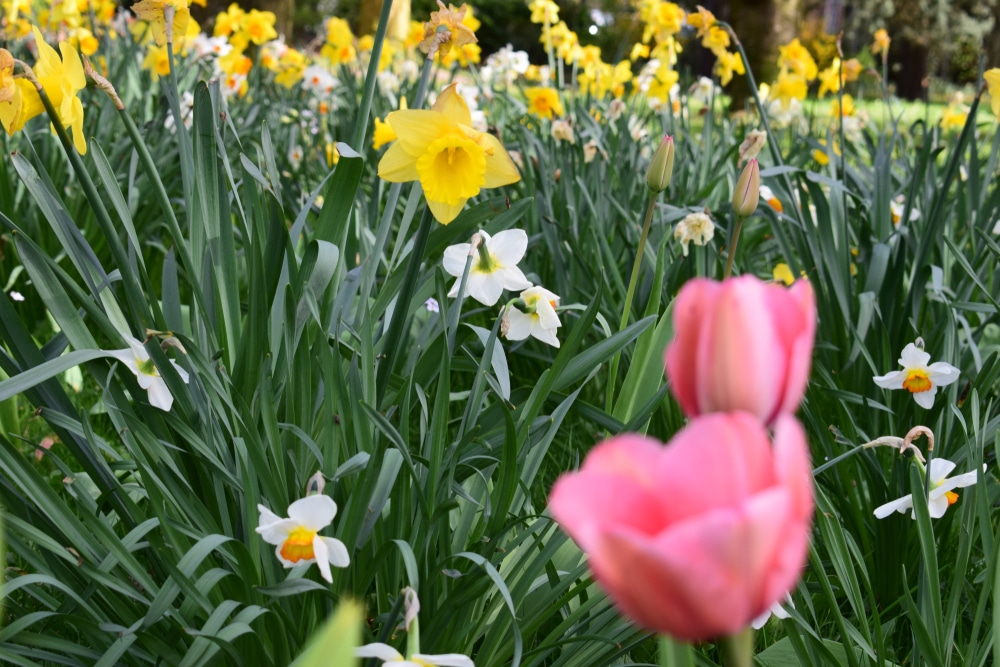 Source: photedetemps / shutterstock
Source: photedetemps / shutterstockLille’s Jardin des Plantes botanic gardens were created in 1948 and occupy 11 hectares on the south-eastern edge of town.
Replacing fortifications that had stood on the site, the traditional planting of trees, shrubs, and roses contrasts dramatically with the modernist greenhouse that shelters plants from more tropical climates than Lille can manage.
The greenhouse spans 1,200 square metres, and rises eight metres in height to provide the headroom for its bananas and palm trees. The 1952 orangery contains Mediterranean plants including oleander and mimosa.
9. Euralille
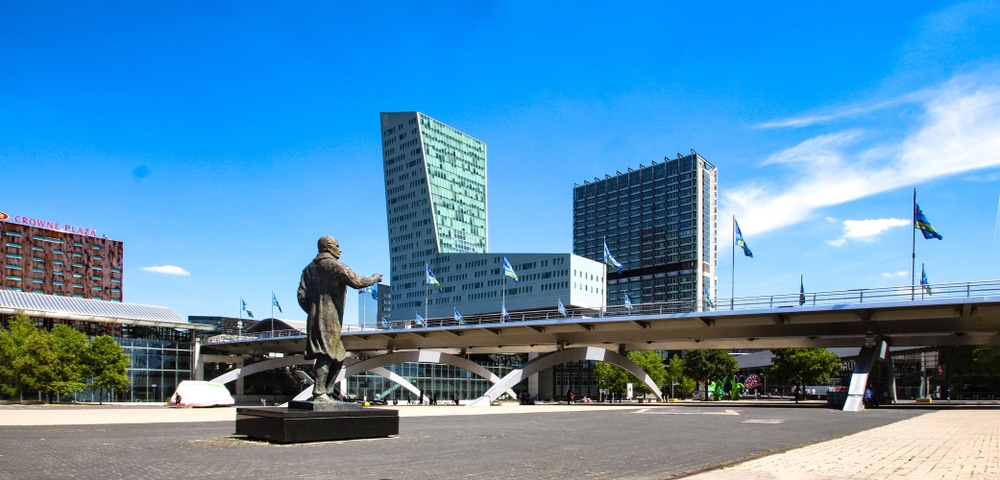 Source: MisterStock / shutterstock
Source: MisterStock / shutterstockThis modern city quarter was created in the 1980s and includes the city’s railway stations as well as a major shopping centre boasting 115 stores.
Its modern buildings, including the Tour de Lille, and landscaped gardens make it a pleasant quarter in which to wander, even if you have no intention of making use of its huge number of shops, cafes, and restaurants.
Website: https://fr.westfield.com/euralille
10. Porte de Paris
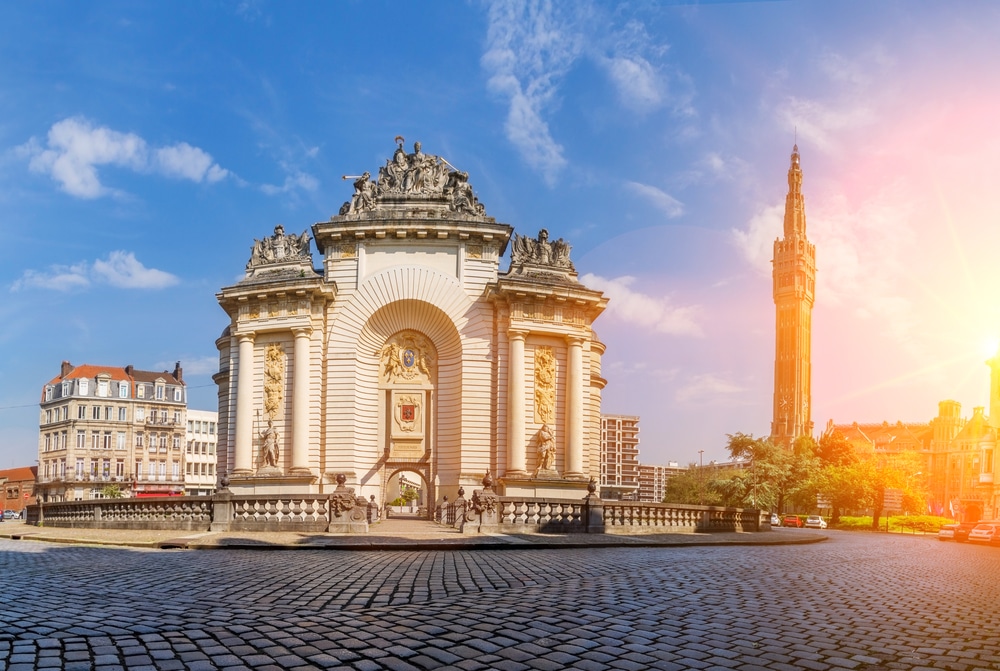 Source: sdecoret / shutterstock
Source: sdecoret / shutterstockThe monumental Porte de Paris sits, like the Arc de Triomphe in Paris, on a traffic roundabout.
Predating the arch in Paris by more than one hundred years, it was built in the seventeenth century to mark the victories of Louis XIV’s capture of the city from the Spanish Hapsburgs.
It was constructed by Simon Vollant, a pupil of Vauban, with an ornate baroque style that reminds many of the Palace of Versailles.
It is decorated with a number of sculptures, including two angels celebrating the king’s victory, Hercules demonstrating his strength, and Mars the Roman god of war. At the very top, the goddess of Victory crowns the king with a golden laurel wreath.
11. City Hall Belfry
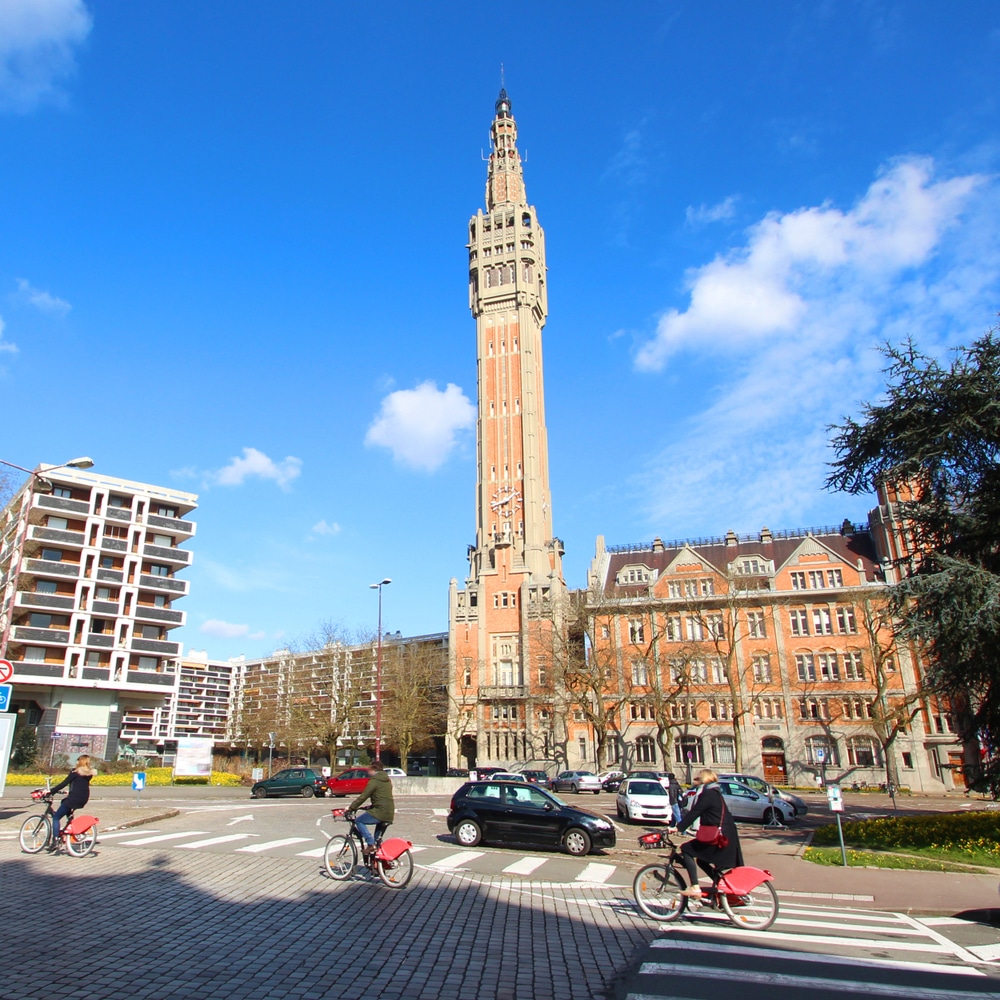 Source: MisterStock / shutterstock
Source: MisterStock / shutterstockThe art deco City Hall dates from only the early 1930s, and takes a deliberately Flemish look to blend in with the older structures in the city, while being largely poured from concrete.
Its long gallery stretches for more than 100 metres, while its walls play host to an important collection of contemporary artworks.
However, it is without doubt the 104 metre high belfry that draws the eye, with echoes in its upper reaches of the Eiffel Tower. Climbing the stairs to the top is worth the effort, offering panoramic views to all corners of the city.
12. Monument to Carrier Pigeons
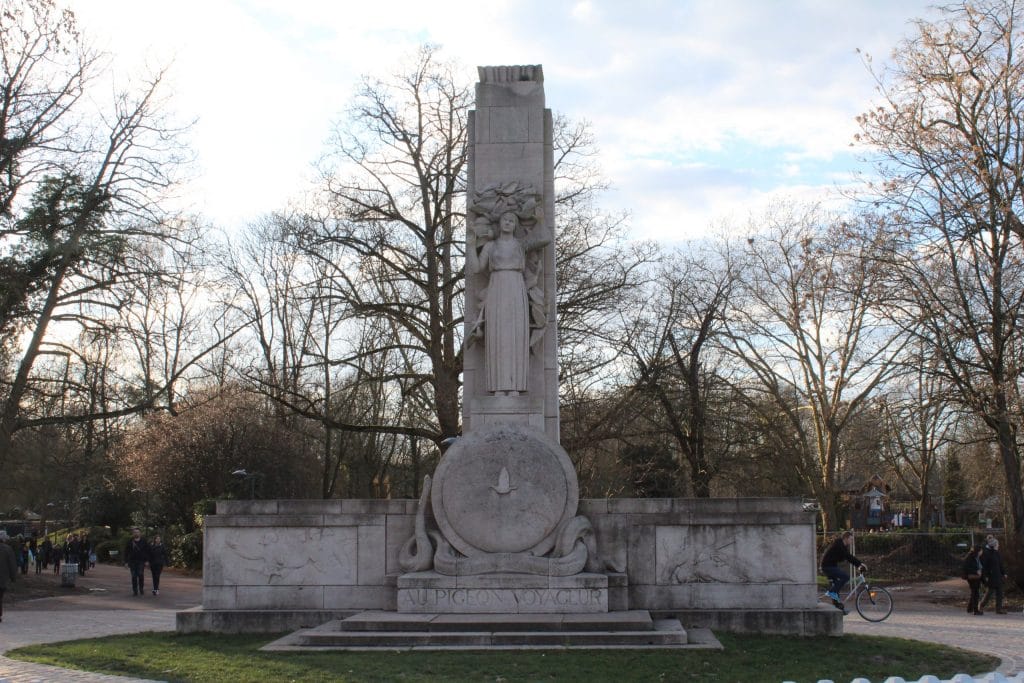 Source: Chabe01 / Wikimedia | CC0
Source: Chabe01 / Wikimedia | CC0One of Lille’s quirkier attractions, the Monument to Carrier Pigeons can be found on Avenue Mathias Delobel, where the Boulevard de la Liberté bridges the Canal de la Moyenne-Deûle.
Carved from sandstone, it depicts a woman surrounded by the birds, and is backed by a column rising several metres into the air with the names of the battlefields and places where the pigeons were used during the First World War.
It honours not only the 20,000 carrier pigeons thought to have been unwitting volunteers in the fighting, but also the men who bred them and were executed by enemy forces as a result.
13. La Manufacture
A significant amount of Lille’s original wealth came from the textiles industry. In the town of Roubaix, 15 kilometres northeast of the centre of Lille, La Manufacture is a museum that aims to tell this history.
Located within a former textile factory, looms and other machinery continue to clatter away and produce the fabrics that made the region famous.
This specific red brick factory was founded by Jean-Baptiste Craye in 1914 to make cloth for the upholstery market, and then expanded to produce carpets and modern reproductions of medieval Flemish tapestries.
The museum was founded in the early years of the new millennium, and gifted to the town less than a decade later.
Website: http://lamanufacture-roubaix.com/en/museum/
14. Gare Saint Sauveur
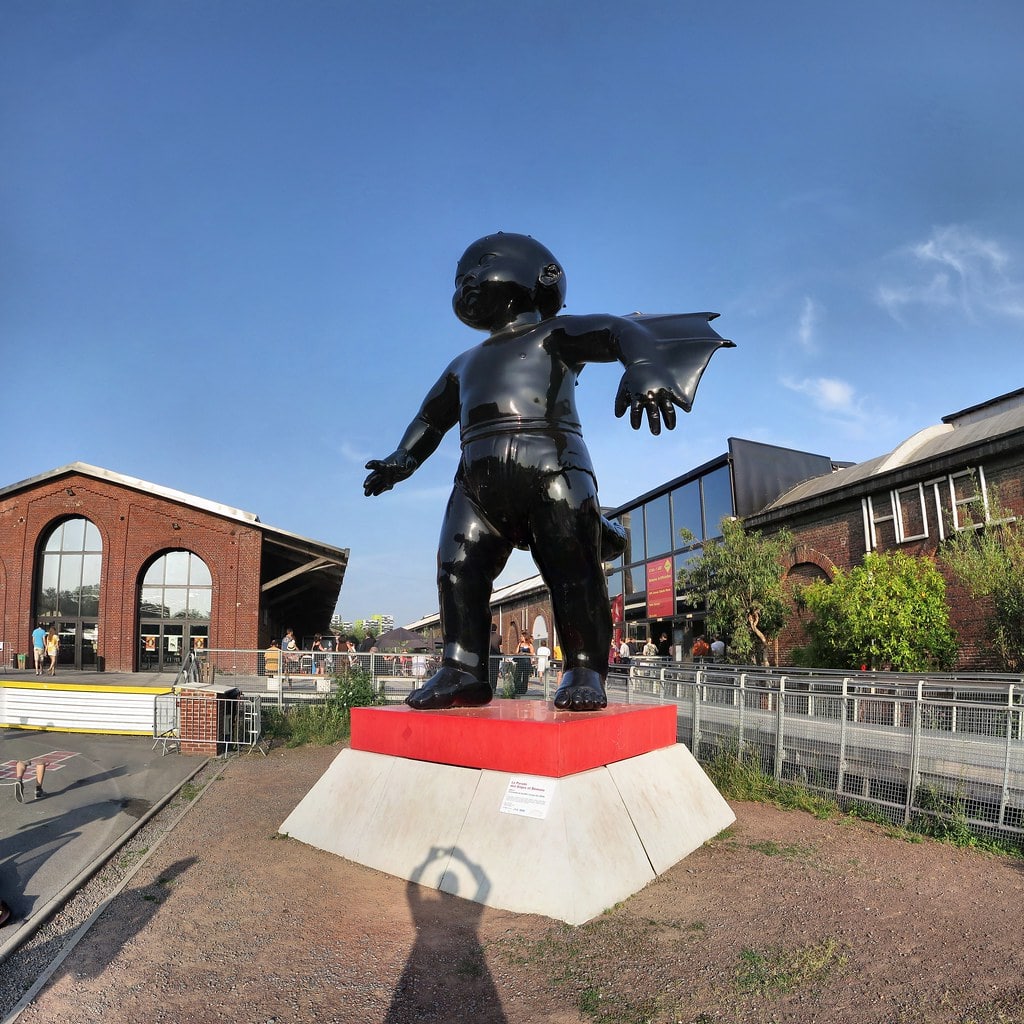 Source: Panoramas / Flickr | CC BY-ND
Source: Panoramas / Flickr | CC BY-NDNot as strange an attraction as it might first sound, the Gare Saint Sauveur is no longer the goods station it once was.
As Lille evolved around it, so did this railway station, which was converted into a cultural space hosting exhibitions, concerts, and film screenings.
Lying opposite Jean-Baptiste Lebas Park, the centre also boasts a bistro located in a former goods shed, with a fine terrace in which to relax and absorb the ambience.
Website: https://garesaintsauveur.lille3000.eu/
15. Hospice Comtesse Museum
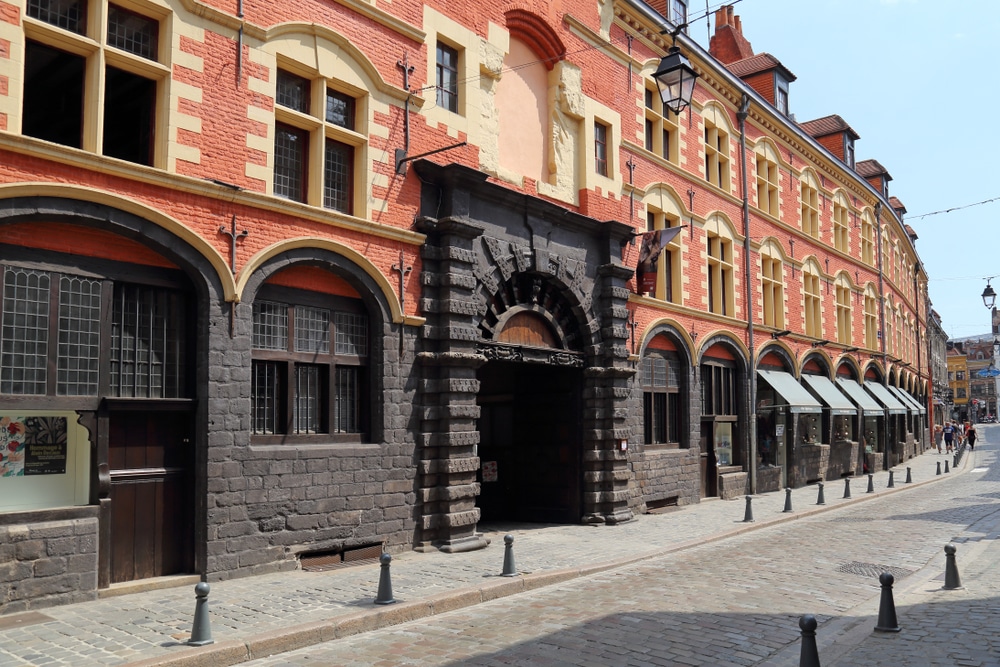 Source: jan kranendonk / shutterstock
Source: jan kranendonk / shutterstockLocated on Rue de la Monnaie in Vieux Lille, the Hospice Comtesse Museum has a collection spanning paintings, ceramics, and furniture.
Occupying a structure that spans the fifteenth to the nineteenth centuries, it has a history as a hospice dating back to 1236. Its construction was paid for by Countess Joan of Flanders, and the museum acts as a great bridge between that time and our own.
Visitors can explore an old hospital ward known as the Salle des Malades. One of the oldest parts of the complex, it dates from 1470 and has an impressive barrel-vaulted ceiling. Tours continue on to the richly-decorated chapel, and the two courtyards, which contain a garden filled with plants thought to have medicinal actions.
Website: https://www.lille.fr/Le-Musee-de-l-Hospice-Comtesse